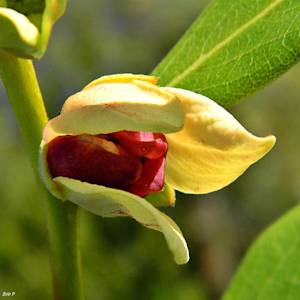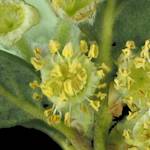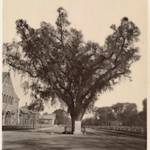Arizona Agave
1959 CE • Arizona
"Agave arizonica was first discovered in 1959 in the New River Mountains of Arizona . . . It has been described as one of the rarest and most beautiful agaves in Arizona. The Arizona agave is a member of a prestigious family of plants, the Agavaceae. Within this family are numerous century plants that have been cultivated by humans for food, fiber, and alcohol uses . . . Agave arizonica is native to a small area in central Arizona, occurring on open rocky slopes in chaparral or juniper grassland . . . The distinctive bright green leaves of this species have mahogany margins and are generally arranged as single rosettes . . . Unfortunately, cattle grazing in areas where this species naturally occurs has severely impacted the ability of the Arizona agave to successfully produce flowers. In 1988, only 12 of 41 mature plants were able to produce flowers due to trampling and grazing from cattle in the area."
"Arizona Agave (Agave x arizonica)," Center for Plant Conservation.
Image: Milo44, CC BY-SA 3.0, via Wikimedia Commons


Learn about Maya Lin’s fifth and final memorial: a multi-platform science based artwork that presents an ecological history of our world - past, present, and future.

Discover ecological histories and stories of former abundance, loss, and recovery on the map of memory.

Learn how we can reduce our emissions and protect and restore species and habitats – around the world.

See how art can help us rethink the problems we face, and give us hope that each one of us can make a difference.

Help make a global memorial something personal and close to home. Share your stories of the natural world.


